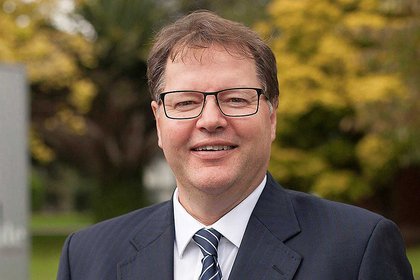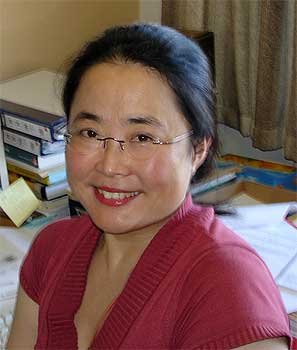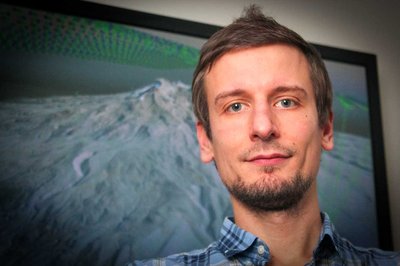
Riddet Institute deputy director Professor Warren McNabb.
Three Massey University researchers have secured more than $13 million in funding, from the Ministry of Business, Innovation and Employment Endeavour Fund.
The Endeavour Fund invests in excellent research that has high potential to positively transform New Zealand’s future economic performance, sustainability and integrity of our environment, help strengthen our society, and give effect to Vision Mātauranga.
The annual grants are split into two areas – Smart Ideas and Research Programmes.
Smart Ideas are investments in promising, innovative research ideas with the high potential for benefits for New Zealand, and to refresh and diversify the science portfolio. Research Programmes support ambitious, well-defined research ideas, which have high potential to positively transform areas of future value, growth or critical need to New Zealand.
Milk Means More (NZ3M) – Research Programmes
Riddet Institute deputy director Professor Warren McNabb leads a team that has been awarded $11,268,560 in funding, for their research project entitled New Zealand Milk Means More (NZ3M). The project is a collaboration between the Riddet Institute which is hosted by Massey University, the Massey University Institute of Food Science & Technology, AgResearch and its Food Nutrition Health and Dairy Foods science teams and the University of Auckland (Professor David Cameron-Smith). The project was co-developed with The a2 Milk Company, The Dairy Goat Cooperative, Fonterra, Landcorp, Maui Milk, Miraka, NIG Nutritionals, Spring Sheep Milk Co. and Synlait.
NZ3M will provide mechanistic understanding of differences in the outcomes arising from diversity in ruminant milks. This will enable industry partners to build credibility and gain endorsement for New Zealand milks as part of a diet that consistently sustains health and wellbeing that consumers in established and emergent markets in North America and Asia, will value.
“NZ3M builds on our research, and that of others, that structural assemblies in bovine milk affects its digestion,” Professor McNabb says. “However, effects of interspecies differences [bovine/ovine/caprine/cervine] in structural assemblies on digestion remain unclear. Consequences of interactions between milk structural assemblies and digestion, and absorption for nutritional outcomes are ill defined.”

Dr Xiaowen Yuan.
Functional carbon nanomaterials from harakeke fibres for sustainable energy applications – Smart Ideas
Dr Xiaowen Yuan at the School of Engineering and Advanced Technology has been awarded $999,978.
The research aims to harness the unique properties of harakeke fibres, otherwise known as New Zealand flax, to improve supercapacitors - an energy storage device that is a promising alternative to standard batteries with many applications including portable consumer electronics and transport.
Global demand for compact, light-weight and efficient energy storage devices provides the opportunity for this research. Supercapacitors are light-weight and fast charging, however those currently available suffer from electrode problems limiting their applications. In this research a novel technology will be developed to address this issue.
“Harakeke fibre is a good potential candidate due to its excellent and unique properties,” Dr Yuan says. “This research will develop new high-tech applications for harakeke fibres, and will be underpinned by mātauranga Māori. Outcomes of this research will help establish a New Zealand plant fibre processing industry and pioneer research in sustainable and clean energy.”
New Zealand company Carbon Valley Ltd will co-fund this research and commercialise the developed technology with other potential partners.

Dr Gabor Kereszturi.
Assessing New Zealand’s environmental and mineral indicators using air- and spaceborne hyperspectral imaging” – Smart Ideas
Lecturer in Earth Sciences Dr Gabor Kereszturi, of the School of Agriculture and Environment, has been awarded $999,000.
The project looks to use hyperspectral imagery to explore New Zealand’s mineral resources and environment, which are often hard to map effectively and efficiently on a countrywide-scale.
They will do this by developing new state-of-the-art mapping techniques, which will integrate hyperspectral imaging with aeromagnetic and regional soil survey data to develop a statistical model to predict mineral occurrences. The team will initially focus on three South Island study sites.
“Hyperspectral imaging in New Zealand has the transformative power to change how we quantify New Zealand’s environmental and natural resources,” Dr Kereszturi says. “However, airborne hyperspectral imaging is limited by computation power and survey costs when it comes to New Zealand-wide reconnaissance. This research project will develop solutions to these limitations to expand the use of hyperspectral technologies in New Zealand, and globally, through utilising future hyperspectral satellite missions.”
The project builds on the strength of Massey University’s remote sensing expertise to provide effective and high-tech solution for environmental and mineral prospecting. Massey University is also leading the way to implement this type of technology in New Zealand in volcano monitoring, natural hazards, geothermal exploration and agriculture.
The multidisciplinary project is a collaboration between Massey University, GNS Science and the University of Otago, with international links to Canadian and German research organisations.